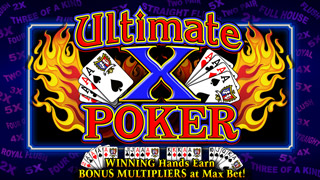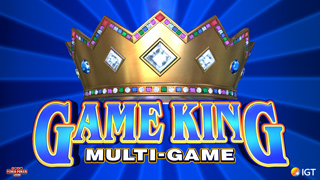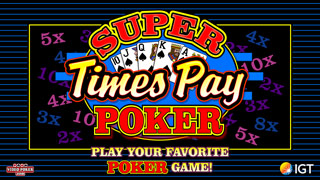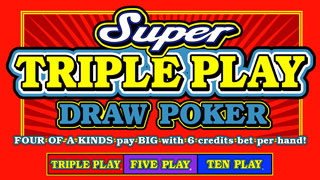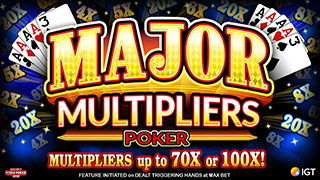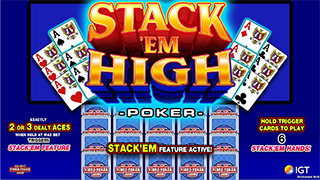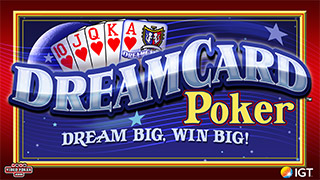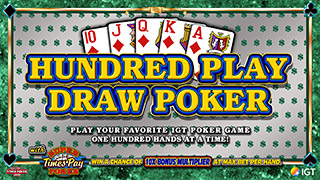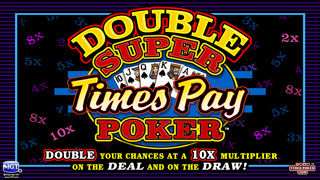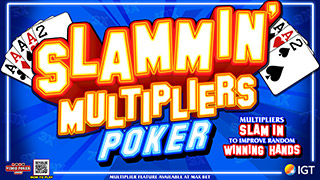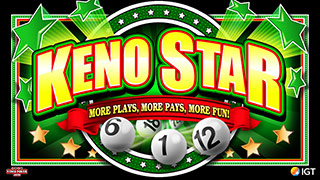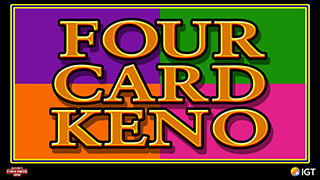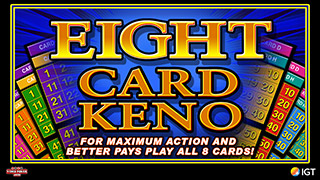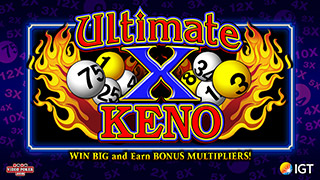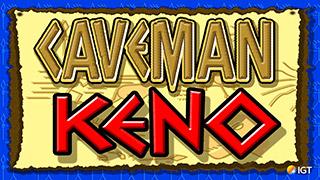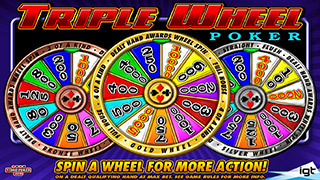What Would It Take???
-
Frank Kneeland
- VP Veteran
- Posts: 762
- Joined: Wed Feb 02, 2011 6:59 pm
Re: What Would It Take???
I would offer that the only way to do this effectively is to 'fix' the strategy for drawing quads, such as "only hold pairs when they are dealt". This, of course, would fly in the face of two pair FH draws, and 4 to the SF/RF with a pair SF/RF draws. I really don't know.. I think I have that one now. A separate track on dealt cards vs times you draw to specific hands. You might get dealt something, but if you choose not to hold it it doesn't get tracked on the draw side of the test.~FKP.S. We don't want to inhibit people's choice of strategy and the test needs to work for people that choose not to play optimal strategy as well as for those that do.
-
Frank Kneeland
- VP Veteran
- Posts: 762
- Joined: Wed Feb 02, 2011 6:59 pm
On vpFREE the suggestion came up that a video camera be used to record the hands and that one could track all five dealt cards and all drawn cards for simple 1 in 52 randomness.Opinions?Is anyone sure it's legal given todays rules on cameras in casinos. I know they changed the rules recently, but I'm still living in the past.~FK
-
New2vp
- Video Poker Master
- Posts: 1879
- Joined: Mon Sep 11, 2006 4:02 am
In a book I read on probability math I remember it stating that by averaging Ten 100 trail samples you get a higher level of certainty than if you used the average of One 1000 trail sample. I also remember it saying that depending on the probability of the thing being tested there is a sweet spot for maximum accuracy in minimum trials. For instance One Thousand 1 trial samples would not be better:)I have no idea what the sweet spot would be for VP or how to calculate it, or even what math to use to calculate it.Where is new2vp?Hey Frank, I apologize for my absence. I've been a little busy and unfortunately will probably be so in the near future, so I don't know how much immediate help I will be, but I'll try and knock out a few of the issues now that you have addressed.I would need more specifics on this reference. My opinion is that unless there were concerns for errors in the larger sample size, it does not make sense that simply dividing a sample up randomly into 10 piles would give you more information UNLESS there was a specific reason to divide them based on other characteristics.I could hazard a guess that a statistic from what is called a "stratified" sample would be better for inference (in terms of having a lower variance), but this only works if the different "strata" themselves have different characteristics than the overall population. For example, in projecting election results, if we can divide a sample of 1000 into groups like male republicans, female independents, etc., we can get by with a smaller sample size for a given level of precision (or a higher level of precision for a given sample size). The reason it works for stratified sampling is because of some other knowledge we might know about the size of the strata in the larger population and an assumption that members have more in common with others in their own stratum than they do in the general population.Having said that, I don't see a lot of application of stratified sampling here. I suppose that it would make some sense to keep information separate by casino or machine if one has some reason to believe that there would be differences. In such cases, this would likely require more sampling solely from the casinos suspected of having non-normal outcomes.
-
BillyJoe
- Video Poker Master
- Posts: 3198
- Joined: Sat Aug 23, 2008 2:00 pm
On vpFREE the suggestion came up that a video camera be used to record the hands and that one could track all five dealt cards and all drawn cards for simple 1 in 52 randomness.
Opinions?
Is anyone sure it's legal given todays rules on cameras in casinos. I know they changed the rules recently, but I'm still living in the past.
~FK
I have never tried to use a video camera, but I routinely use my cell phone camera to snap a pic of a good hand. This was never a problem, until I did it in St Louis, Missouri last year, and they freaked. I thought they were going to throw me out, but then the security guy said "If anyone asks, I didn't see you do that".
Opinions?
Is anyone sure it's legal given todays rules on cameras in casinos. I know they changed the rules recently, but I'm still living in the past.
~FK
I have never tried to use a video camera, but I routinely use my cell phone camera to snap a pic of a good hand. This was never a problem, until I did it in St Louis, Missouri last year, and they freaked. I thought they were going to throw me out, but then the security guy said "If anyone asks, I didn't see you do that".
-
Frank Kneeland
- VP Veteran
- Posts: 762
- Joined: Wed Feb 02, 2011 6:59 pm
Out for rest of day.I have no idea if what I'm attempting is even possible or what the end result will be, and like most good science, "research is what I'm doing when I have no idea what I'm doing."Thank you all for your ideas, keep em-coming and I'll post a "what's left to figure out" in the morning.~FK
-
Tomcat1569
- Senior Member
- Posts: 252
- Joined: Tue Feb 23, 2010 1:43 am
[QUOTE=Frank Kneeland]On vpFREE the suggestion came up that a video camera be used to record the hands and that one could track all five dealt cards and all drawn cards for simple 1 in 52 randomness.Opinions?Is anyone sure it's legal given todays rules on cameras in casinos. I know they changed the rules recently, but I'm still living in the past.~FK
I have never tried to use a video camera, but I routinely use my cell phone camera to snap a pic of a good hand. This was never a problem, until I did it in St Louis, Missouri last year, and they freaked. I thought they were going to throw me out, but then the security guy said "If anyone asks, I didn't see you do that". [/QUOTE]
Billy, AC used to be like that until recently. The guards would be on you as quickly as if they dropped from the ceiling telling you very sternly that it was not allowed to take pics of nice hands. Now they don't seem to care any more.
-
New2vp
- Video Poker Master
- Posts: 1879
- Joined: Mon Sep 11, 2006 4:02 am
Once you decide what you want to test, it is likely that you could either use the binomial distribution to test for proportions where the observation has only two outcomes, or a chi-squared test if it has more than two. Depending on the level of precision required, you may need to choose a different sample size. Of course, many experiments will be conducted over a period of time or a number of trials that is based on the users time and availability and, even with such limitations, such samples can be analyzed.Tests of overall return will be difficult. Using the normal distribution might require several hundred thousand hands and other tests would likely need to be tailor-made from custom distributions.I think there is no reason to worry about being independent of strategy. For most tests, you simply need to count up the number of trials, number of successes, and be able to calculate the theoretical probability of a success occurring. A different strategy simply means a different probability calculation.If you are specific about the types of events that you will be measuring, the spreadsheet could have the probability of the event "hard-coded," so this more difficult portion would NOT have to be completed by the user.However, if you do not anticipate exactly what the user would want to test, perhaps you will also allow "advanced" users to supply their own probability. For example the probabilities of different types of quads would be different in Jacks or Better than in Triple Double Bonus.You have conflicting goals of small sample size and 99% confidence. Higher sample size implies higher confidence. And as stated earlier, sometimes a larger sample size is not reasonable to obtain.Statistical theory (for frequentists) likes only to reject a given hypothesis or NOT reject it rather than confirm it with a given percentage, so while you can reject it with a 99% confidence, you likely will never be able to confirm a hypothesis with 99% certainty.For example suppose I said that instead of the ace of spades coming up with probability 1/52, I "knew" from talking to some programmer that it instead was rounded to 0.019. You would need a really large sample size to prove one or the other. And if you were able to, I might say, "Sorry, it was rounded to 4 places; it's really 0.0192, not 1/52," and put us back to square one (even worse actually, since we would now require a sample size much bigger than the previous one).I applaud your goal of having people test this for themselves. There will still be non-believers, even if they conduct the experiment themselves. There are even Bayesians among statisticians, who apply weight to prior beliefs regardless of what an experiment tells them.If you are trying to convince the inconvincible, this device will still not be "fool"-proof. Most will have to take any formulas given on faith since they will not likely be able to derive the formulas themselves. It is inconceivable for most to understand and therefore believe that it requires basically the same sample size to estimate a proportion with a given degree of accuracy (such as the percentage of left-handers +/- 1%) in a small city of 40,000 as it does in our entire country of nearly 300 million. And they will likely never be math-savvy enough to be able to prove that to themselves. They will have to put their trust in someone who can do this...and of course, how will they know for certain that the guru did not make a mistake or in fact is trustworthy.A purely (or nearly) hypothetical example follows: Presume that one person believed that the proportion of getting the same rank as what was discarded with a 1-card draw was 40% while another believed it was 3/47. Further presume that a sample of 180 1-card draws was conducted and the number of matched ranks was 11. The 99% confidence intervals for a 3/47 success probability is 3 to 20; the 99% confidence interval for the 40% success probability is 55 to 88. Most would clearly see that the results of the experiment clearly and overwhelmingly favor randomness, but others might mistakenly feel that an experiment of several thousand trials would be necessary to get to that conclusion.A couple other problems:1. You will from time to time get an extreme sample that suggests that the population is different than it actually is. Statistics that are within a given range 99% of the time are outside that range 1% of the time. When you find a sample in the "critical region" that is outside the normal range, you will not know for certain if you have an extreme sample or if there is indeed a particular type of non-randomness. If you do 100 samples or if 100 people do 1 sample each, you are expected to get at least one false positive. So there needs to be room for applying other beliefs in addition to any experiment. 2. There might be a different interpretation depending on how extreme the result is. If the chances of getting a result was 1 in 87 septillion vs. 1 in 101, both would fail a 99% test, but one would be considerably more convincing than the other. You may need a bit of a user's manual as there is no substitute for expert analysis both before and after an experiment is conducted.Frank, I think your inspiration to come up with this idea is terrific and I wish you well. Please don't interpret what I've written here as criticism. I hope your project bears fruit and helps some people, but the debates (fortunately or unfortunately) will continue.
-
moneyla
- Forum Rookie
- Posts: 46
- Joined: Thu Jun 02, 2011 3:02 am
I dont know if this is the best scientific method but I think the easiestt test is the best test.If the video poker game is fair, shouldnt all cards have an equal chance of being dealt? So chart out the the first five dealt cards over X number of hands and see if you get a fair distribution of all of the cards. this eliminates the complication of "hold cards" which would affect the number of cards that show up in the draws.
-
New2vp
- Video Poker Master
- Posts: 1879
- Joined: Mon Sep 11, 2006 4:02 am
I dont know if this is the best scientific method but I think the easiestt test is the best test.If the video poker game is fair, shouldnt all cards have an equal chance of being dealt? So chart out the the first five dealt cards over X number of hands and see if you get a fair distribution of all of the cards. this eliminates the complication of "hold cards" which would affect the number of cards that show up in the draws.It is true each dealt card has a 5/52 chance of being dealt. It just as true that each drawn card as an n/47 chance of being dealt where "n" is the number of cards being drawn. So, while it would be more complicated, you could still compare actual and expected in much the same manner.However, if I were to gaffe a machine with programming, I could make the individual card percentages come out exactly right while still reducing the chances for different paying hands to occur. For example a larger percentage of ace of clubs when a four-flush of diamonds, hearts, or spades was held could offset a smaller percentage when there was a four-flush of clubs or the other 3 aces held.So, outcomes of some type should be involved in any serious test.
-
WildTurkey
- Forum Newbie
- Posts: 2
- Joined: Mon Jul 04, 2011 12:08 am
If was wondering if anyone knows the details about how Nevada Gaming runs that Chi-Squared test? How many hands do they use? What condition are they testing?



